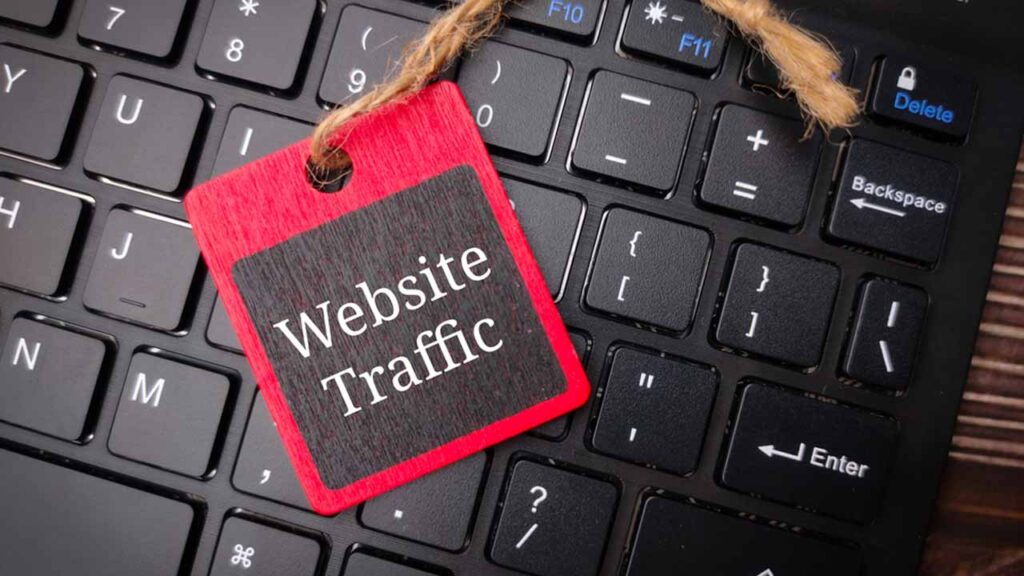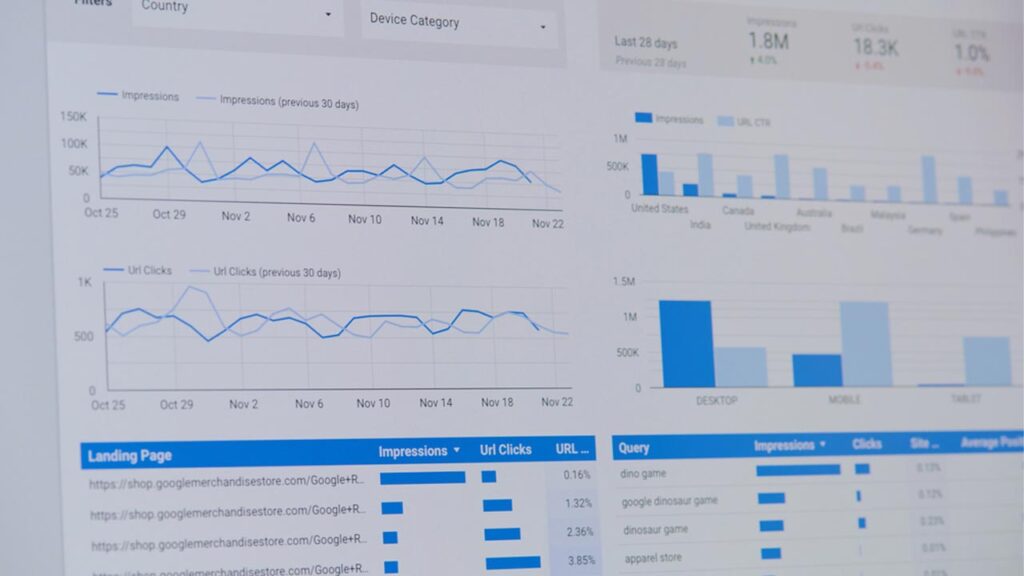Maximizing Your Landing Page in SEO: Essential Tips for Peak Performance
Brett Lewis
SEO - June 10, 2024

Landing page in SEO: the phrase may sound technical, but its essence is simple – how do you optimize your online storefront to catch the eye of both search engines and prospective customers? This article provides direct, actionable strategies to position your landing page for optimal performance in search results, ensuring it serves as a key entry point that captures traffic and converts visitors effectively. All without the complexity, and right to the point.
Key Takeaways
- SEO is vital for landing pages to draw organic traffic, improve search rankings, and increase conversions by aligning with user intent and search queries.
- Creating an SEO-friendly landing page involves high-quality, relevant content, an engaging user experience (UX), and mobile optimization to meet the demands of modern web traffic.
- On-page and off-page SEO strategies, including keyword placement, meta tag optimization, backlink building, and social media sharing, are essential for enhancing visibility and performance.
The Importance of SEO for Landing Pages

Imagine your landing pages as a bustling shop in the busy heart of a city. Landing page SEO is the map that guides customers to your door. Without it, your shop might as well be invisible. SEO landing pages are designed to attract visitors organically (which is different than paid ads), appearing at the top of search results when relevant phrases are searched.
By aligning with user intent and ensuring relevance to search queries, you can optimize landing pages to attract new prospects more efficiently, driving conversions and potentially increasing revenue through a well-designed PPC landing page. With seo friendly landing pages, you can further enhance your online presence and improve your overall marketing strategy to generate leads.
Organic Traffic Growth
SEO acts as a magnet, pulling in a consistent stream of traffic to your landing pages. Imagine seeing your web traffic chart climbing steadily, with new prospects discovering your page every day. This isn’t a stroke of luck – it’s the result of effective SEO.
The search traffic potential of a keyword is like a treasure map, and if your landing page ranks at the top for that keyword, you’ve struck gold.
Improved Search Engine Rankings
Remember the bustling shop in the city’s heart? It’s your landing page. Now, imagine it rising above all other buildings, visible from miles around. That’s what SEO does to your landing page in the digital world. By optimizing landing pages, they can achieve higher rankings without relying on paid advertising, fostering more organic traffic.
SEO, or search engine optimization, is like an elevator, lifting your landing page above the crowded streets of the internet, making it easier for your audience to find you.
Boosted Conversions
SEO doesn’t just attract visitors – it turns them into customers. The right SEO practices can lead to higher conversion rates, turning your landing page into a conversion machine. Every form filled, newsletter signed up for, or product purchased can be traced back to your well-optimized landing page.
Crafting an SEO-Friendly Landing Page

Building an SEO-friendly landing page is like crafting a masterpiece. It requires careful planning, meticulous execution, and continuous optimization. The canvas is your landing page, and SEO techniques are your paintbrush. Your masterpiece isn’t complete until it perfectly aligns with user intent, incorporates relevant keywords, and delivers high-quality content.
The key to crafting an SEO-friendly landing page lies in understanding your audience and search engines. By analyzing top-ranking pages for your target keyword, you can gain insights into the content, design elements, and calls-to-action needed to satisfy search intent.
Content Relevance and Quality
In the world of SEO, content is king. But not just any content – it has to be relevant and high quality. Imagine your content as the heart of your SEO strategy, pumping life into your landing page. But how do you craft this life-giving content?
Start by identifying the needs of your target audience. For example, if you’re offering personal loans, showcase valuable information like rates and lender comparisons. Present this information with clear and engaging headlines, and you have content that’s not only relevant but also engaging.
Always remember to keep your content up-to-date. Just like a shopkeeper keeps their store stocked with fresh items, you need to keep your content relevant and credible for both users and search engines.
User Experience (UX)
If content is the heart of SEO, then user experience (UX) is the backbone. A great UX supports your SEO efforts, making your landing page not only functional but also enjoyable to use. But how do you enhance user experience?
Start by optimizing your page’s loading times. Just like a customer wouldn’t wait in a slow-moving queue, visitors won’t wait for a slow-loading page. Techniques like image resizing and compression can improve user engagement and page performance, positively affecting SEO.
Another tip is to include anchor links on longer and more complex landing pages. This allows users to jump to the sections they care about most, improving overall user experience.
Mobile Optimization
In today’s digital world, mobile optimization is not just an option – it’s a necessity. With approximately 60% of website traffic occurring on mobile devices, mobile-friendly SEO landing pages are essential. Would you like some tips on how to ensure your landing page is mobile-friendly? I can help with that.
Firstly, ensure your page loads quickly. Just like a slow waiter can ruin a dining experience, a slow-loading page can frustrate users and lead them to abandon your site. Techniques like:
- image compression
- caching
- minimizing HTTP requests
- optimizing code and scripts
can help speed up your page, enhancing user experience and SEO performance.
Secondly, ensure your design adapts to various screen sizes. Tools like Google’s official tool and Search Console can test the responsiveness of your landing page on mobile devices.
On-Page SEO Techniques for Landing Pages

Once you’ve crafted an SEO-friendly landing page, it’s time to fine-tune it with on-page SEO techniques. Think of these techniques as the finishing touches to your masterpiece. They help to enhance the details, making your landing page more attractive to search engines and users alike.
On-page SEO techniques include strategic keyword placement, optimized meta tags, and descriptions, as well as effective internal linking. These techniques work together to improve your landing page’s visibility, making it easier for search engines to understand your content and rank it higher in search results.
Keyword Placement
Keyword placement is a critical aspect of on-page SEO. It’s like placing signposts on a road – they guide search engines and users to your landing page. But where should you place your keywords?
Start by placing your target keywords in elements like title tags and media file names. This will enhance your landing page’s search engine rankings. Also, use your selected target keywords naturally in the page title, headline, and content. This will help search engines to understand the topic of your landing page.
Meta Tags and Descriptions
Meta tags and descriptions are like your landing page’s ID card. They tell search engines and users what your page is all about. Optimizing these elements is crucial for improving your search engine rankings and encouraging users to click on your page.
Your title tag, represented as the big blue link on search results pages, should be compelling to encourage click-throughs, directly impacting user engagement. Meanwhile, your meta description should summarize your page’s offering, providing clear and relevant information to potential visitors.
Internal Linking
Internal linking is like creating a map of your website for search engines. It helps search engines comprehend the context and content of your landing pages, enhancing SEO performance. This strategy not only helps to improve your SEO, but it also makes navigation easier for users, enhancing their overall experience.
Off-Page SEO Strategies for Landing Pages

Now that you’ve optimized your landing page with on-page SEO techniques, it’s time to venture out into the digital landscape with off-page SEO strategies. Think of off-page SEO like networking – it’s about building relationships with other websites and platforms to enhance your credibility and visibility.
Off-page SEO strategies include building backlinks and leveraging social media sharing. Both these strategies help to improve your credibility, search rankings, and the ability to tackle competitive keywords.
Building Backlinks
Building backlinks is like receiving endorsements from other websites. Each backlink acts as a vote of confidence, enhancing your credibility in the eyes of search engines. But how do you build these valuable backlinks?
There are several ways to build backlinks. Some strategies include:
- Adding your landing page to relevant resource pages
- Getting links from supplier and manufacturer websites
- Providing testimonials for products or services to earn backlinks
- Engaging in broken link building
- Engaging influencers to bolster landing page traffic and backlinks
Social Media Sharing
Social media is like a bustling marketplace, full of potential customers. Sharing your landing page on social media can help improve search rankings, even if social indicators are not directly incorporated into Google’s ranking algorithm.
Content with high social engagement often ranks well, indicating a correlation between social signals and search rankings.
Monitoring and Analyzing Landing Page Performance

Every successful SEO strategy involves continuous monitoring and analysis. It’s like keeping a close eye on your shop’s sales, customer behavior, and stock levels. By monitoring your landing page performance, you can identify areas of improvement, enabling quick adaptation and optimization.
Tools like Google Analytics and Search Console are invaluable for tracking landing page performance. They offer insights into:
- The number of unique users
- Conversions generated
- Organic traffic
- Click-through rates
- Search engine performance
- Keyword rankings
- Ranking for target keywords.
Google Analytics and Search Console
Google Analytics and Search Console are like the compass and map of your SEO journey. They guide you towards your destination, providing real-time data on your landing page’s performance.
Google Analytics allows businesses to:
- See how users interact with landing pages, providing data on traffic and user behavior
- Track conversion metrics to understand the effectiveness of your landing page in driving desired actions
- Integrate these insights with other marketing tools to help optimize your landing page performance.
A/B Testing
A/B testing is like a scientific experiment for your landing page. It involves comparing two versions of a page to identify which one performs better. But how do you conduct A/B testing?
Start by testing one element at a time, such as the headline or the call-to-action (CTA). This way, you can accurately measure the impact of individual changes. There are several tools designed to facilitate A/B testing, including VWO, Optimizely, AB Tasty, and ConvertKit.
Summary
In conclusion, SEO is an essential part of any successful landing page strategy. It helps to attract organic traffic, improve search engine rankings, and boost conversions. By crafting SEO-friendly landing pages and implementing on-page and off-page SEO strategies, you can turn your landing page into a traffic magnet.
Frequently Asked Questions
What is the importance of SEO for landing pages?
SEO is crucial for landing pages as it drives organic traffic, enhances search engine rankings, and increases conversions, acting as a map that directs customers to your online store.
How can I create an SEO-friendly landing page?
To create an SEO-friendly landing page, focus on understanding user intent, using relevant keywords, providing high-quality content, improving user experience, and optimizing for mobile devices. This will help improve your page’s visibility and ranking.
How can I monitor and analyze my landing page performance?
To monitor and analyze your landing page performance, utilize tools like Google Analytics and Search Console, and consider conducting A/B testing to identify key elements for higher engagement and conversions.
